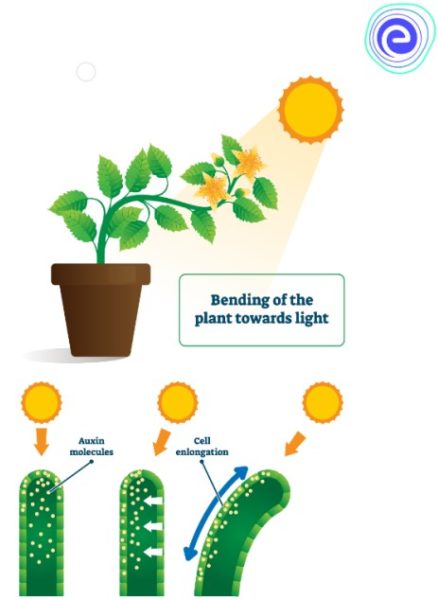GENOME SEQUENCING PROJECT-
- The living beings chose for genome projects were those that are for the most part utilized in hereditary and other logical examinations. Accordingly they might be see as model organic entities. A model living being is a life form about which is a lot of logical information is now accessible. These life forms incorporate both prokaryotic and eukaryotic microorganisms as well as creatures and plants. These organic entities included E. coli, Bacillus subtilis, Archaeoglobus fulgidus, yeast (Saccharomyces cerevisiae), Arabidopsis thaliana, roundworm (Caenorhabditis elegans) and the fruitfly (Drosophila melanogaster). Likewise, human genome project focussed on sequencing of the entire human genome.
- E. coli is, most assuredly, the best concentrated on microorganism. Large numbers of the innovative instruments accessible today were created for the E. coli genome project. The E. coli genome sequencing was finished in 1997. The genome size is simply over 4.64 x 106 bp and contains 4,408 qualities (Table 19.3). B. subtislis is a Gram-positive bacterium that colonizes leaf surfaces. It is abundantly utilized in modern cycles for both compound creation and food supply maturation. It is for the most part viewed as protected (GRAS). It has a genome of 4.21 x 106 bp that contains nearly 4,212 qualities.
- A. fungidus is a stringently anaerobic archaebacterium. It's genome arrangements was distributed in 1997. The genome size is 2.17 x 106 bp; it contains 2,493 qualities. S. cerevisiae is maybe the main contagious species utilized in biotechnological processes. Its name gets from the way that it can age saccharose (sugar). S. cerevisiae genome sequencing project started in 1989, and the sequencing was finished in 1999.
- A. thaliana is a little plant having a place with the Cruciferae family. It was perceived as a decent organic entity for hereditary examinations in 1907, and has turned into a model plant for hereditary investigations since it has the littlest genome among higher plants. Further, its genome has a low measure of monotonous DNA. Arabidopsis genome sequencing project started in 1990 and was finished in 2000. The genome has 130 x 106 bp and an expected 26,000 qualities.
- C. elegans is a free-living nematode. It is the principal multicellular creature whose genome has been totally sequenced. Genome sequencing was started in 1990 and was finished in 1999. The genome has 97 x 106 bp and has more than 20,000 assessed qualities. The fruitfly, D. melanogaster, is affectionately respected the Sovereign of Hereditary qualities. Drosophila genome sequencing was finished in 2000. It has 180 x 106 bp and ~16,000 qualities. Hence the quantity of qualities in Drosophila is under four-times as numerous as in the bacterium E. coli.
- A few ends have been drawn from the human genome draft succession. A portion of the significant highlights of the human genome are summed up underneath.
1. It contains over 3.2 billion base matches.
2. Just - 5% of the genome encodes proteins.
3.At least half of the genome is gotten from transposable components.
4.The genome has quality rich districts isolated by quality unfortunate locales frequently called quality deserts.
5. Human genome is assessed to have around 35,000 qualities.
6. The biggest quality is the quality encoding dystrophin; it is 2.5 x 106 bp long.
7. Genome successions of various people vary for under 0.2% of the base matches. The greater part of these distinctions happen in type of single base contrasts in the grouping. The single base contrasts are called single-nucleotide polymorphisms (SNPs, frequently articulated as 'cuts'). One SNP happens at each ~1,000 bp of human genome. Around 85% of all distinctions in human DNAs are because of SNPs.
Benefits from Genome Sequencing Activities-
1. It empowers the assurance of the total hereditary data present in the genomes of different life forms.
2. The connections between qualities can be found with certainty.
3. It gives bits of knowledge on genome association and development, and the components included in that.
4. It has opened up interesting regions for future exploration, e.g., utilitarian genomics.
5. One of the most aggressive assumptions is that genome groupings will permit scientists to figure out the different atomic associations that lead to the ordinary improvement of creatures.
6. Data like SNPS (single nucleotide polymorphisms) have opened up; these might be helpful in more ways than one.
7. Various apparatuses and methods were produced for the genome sequencing projects.
8. A superior comprehension of human hereditary illnesses ought to work with their administration/fix.
9. It might give a comprehension of why various people answer distinctively to similar medications (pharmacogenomics).
10. The pathogenicity of microorganisms would be better perceived. This ought to work with insurance from such illnesses.
ALSO READ-
DNA FINGERPRINTING FULL EXPAINATION




%5B1%5D.jpeg)




🤟🤟🤟🙏🏻
ReplyDeletehm....
Delete